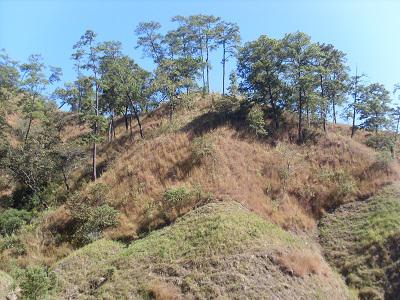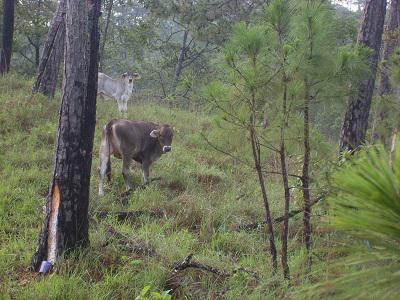Marco Braasch
Understand the interactive effects of fire suppression and livestock grazing on highly competitive exotic grasses and the natural establishment of pine seedlings, in the Biosphere Reserve “La Sepultura” Chiapas, Mexico.

Tropical pine oak forests of the Sierra Madre of Chiapas, México, provide numerous ecosystem services. In the upper River basin of the “Rio Tablon””, land use change to pastures for livestock production and natural and anthropogenic fires have transformed the natural oak-pine forests to open pine forests with exotic grasses in the understory.

Since, this region was decreed as a Biosphere Reserve, thus these pine forests are protected. Cattle grazing, timber production and the use of fire as management practices are strictly regulated. These restrictions have provoked conflicts between the land owners and the authorities because these forests are socioeconomically important as local people are dependent on forest resources for their livelihoods. In 2012, the Pinus oocarpa resin production project started in two rural communities, with the purpose of utilizing these forests and to diversify the income of the local farmers. Currently the combination of resin and cattle production seems a sustainable silvopastoral land use systems for this region.
Natural reproduction of the resin pine depends on forest fires and exposed bar mineral soil. However, fire suppression and exotic grasses has changed these ecological conditions and inhibit natural recruitment of this species, jeopardizing the long-term potential of this forestry system.
In this study, we will understand the interactive effects of fire suppression and livestock grazing on highly competitive exotic grasses (Melinis minutiflora and Hyparrhenia rufa) and the natural establishment of pine seedlings, by observational studies, field experiments, GIS analysis and interviews with farmers of the communities Tres Picos and California.
Nevertheless, the hypothesis of our study is that controlled moderate cattle grazing can substitute the effect of fire in that it reduces exotic grass cover and exposes bare mineral soil. Preliminary reviews of the area indicate that the recruitment of Pinus oocarpa in the area is not enough to guarantee future use of this species. It is highly important to understand the underlying causes and to develop with the owners of this forest a new strategy to increase pine seedling establishment.
Understanding the recruitment of Pinus oocarpa in the Biosphere Reserve “La Sepultura” is important not only to guarantee the production of resin as a sustainable land use practice within the buffer zone of the Biosphere Reserve, but also because successful seedling establishment will stabilize the forest border in the basin near the core zone “Tres Picos” of La Sepultura, a mountain cloud forest well known for his high biodiversity.